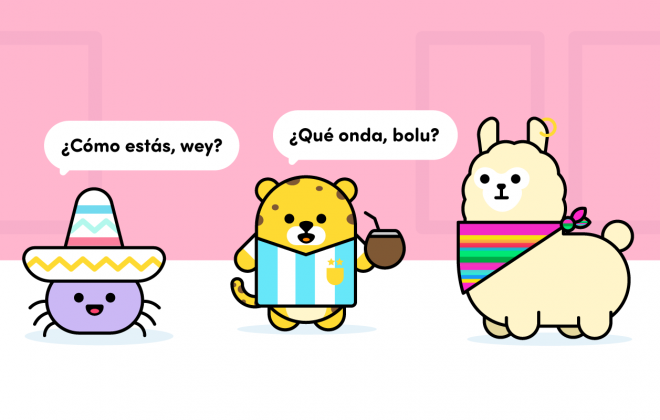Christmas Holidays in Spain
Spain is historically a culturally diverse country with many different traditions for the holidays in its various regions. Some of them, however, are common across the whole of the country and due to history, sometimes in Latin America as well. This article will look at some of the things that Spanish people associate with the holidays, no matter where in Spain they come from.
The “Fat” Christmas Lottery
The Christmas lottery, known as el Gordo de navidad (the Christmas fat one), is a big deal in Spain. The second oldest continuously running lottery in the world, taking place every 22nd of December since 1812, it is also the biggest in terms of the money it shares out with a huge total of 2380 million Euros in potential prize money.
The system itself is a bit complicated. Tickets can be purchased months in advance and people buy a number. These go from 00000 to 99999 and there 170 series of each, meaning 170 copies of each number. Each number of each serie is worth €200 and is broken down into décimos (tenths) sold at €20 a pop. Décimos are sometimes broken down even further into participaciones. This means that for the top prize of 4 million euros each lucky decimo holder would recieve 400,000 euro. At ten decimos and 170 series for each number, that’s a lot of very happy people! Add to this the many smaller prizes, many of which are still considerable and the end result is that prizes are spread out in such a way that whole neighbourhoods, villages or even clubs or groups of friends get something. This, in turn, drives people to buy more lottery because nobody wants to be the odd one out that didn’t win if the some prize happens to “fall” close by!
The draw itself is an event that is broadcast live on national television, featuring children that were traditionally orphans (this is no longer necessarily the case) from the school of San Ildefonso in Madrid, singing out the numbers and prize money in a characteristic way.
A frenzy of celebrations is then always the opening of the midday news, with reporters rushing out to capture images of joy and champagne spraying where the winning numbers of the various prizes, which are many, have been sold.

Christmas Eve and Christmas Day
Christmas Eve, Nochebuena (good night), is a very important occasion in a country with such a strong Roman Catholic tradition as Spain. It commemorates the day on which Jesus is supposed to have been born in Bethlehem and is a family occasion that is most often celebrated by a Christmas dinner with extended family. In modern Spain, this is predominantly made up of seafood, but also cold meats such as the famous serrano ham and various kinds of cured sausages. This is washed down with some sort of sparkling wine, be it the more local cava or champagne and crowned by desert in the form of turrones and polvorones of various kinds.
Turrones are extremely sweet, often rectangular blocks of dough made of eggs and caramelized honey often containing nuts and cream and baked to varying degrees of hardness. Polvorones are soft and crumbly, mostly made of shortbread, sugar, flour milk and nuts. After eating, many people go to “rooster’s mass”, misa del gallo, or midnight mass. Many others make a night out of it and will go party the night away with their friends.
Christmas day is usually a more quiet affair. It is a public holiday during which shops are closed and where some people exchange gifts, or the presents that Santa left overnight are opened, although this is not something that is traditionally Spanish but rather a relatively recent cultural import. Many people, without having quite digested the meal from the evening before, have a second round of huge meals in the form of Christmas lunch – with a similar menu – with the other side of the family or with friends.
Although the most traditional meal during the holidays is Christmas dinner with the family, most people have at least half a dozen overindulgent meals lined up during the holidays with family, friends from school, friends from university, colleagues, local activity buddies… Like in many parts of the world, Christmas might be a time of love, happiness and joy for some, but for many it is definitely a time for overeating and putting on a few pounds!
Day Of “The Innocents”
Named after the bible story in which King Herod orders that children under two (the innocent saints) in Bethlehem be put to the sword, the day of the “innocent saints”, el día de los santos inocentes, or simply dia de los inocentes is celebrated on the 28th of December and is, to all intents and purposes, the Spanish equivalent of April fools’ day elsewhere.
In modern Spain it is traditional to play practical jokes on people and pull their leg on this day. Companies, government organizations, the police and just about anyone play practical jokes or try fool others that become the inocentes, just like in April fools. Some people hang a monigote, a paper cutout silhouette of a man, on each others’ backs in the same way that in France there is the poisson d’Avril in April. The press also joins in and most outlets have a news story that is an outrageous, albeit sometimes subtle, downright lie.
New Year’s Eve Grapes
Nochevieja (“old night”) as New Year’s eve is known begins with a copious dinner with family or friends. Where most countries have a countdown before going nuts to usher in the New Year at midnight, in Spain, things are different. In the runup to to New Year’s Eve, the most sold fruit are grapes because tradition dictates that as clocks strike 12 on the night, twelve grapes have to be eaten by everyone to bring good luck the following year, one for each month.

Wherever people are celebrating, someone will turn on a television set or a radio to follow the clock striking 12, the campanadas and everyone will go quiet as they fight to down the traditional twelve grapes in time. With seedless and peeled grape varieties this is not quite as challenging as it once was, however, and for those that don’t like grapes, these are sometimes substituted by other things such as olives, mandarine orange segments or anything that people can swallow twelve of in time!
If gathered at home, people usually go out after the campanadas, or if they are staying at home the tables are cleared, the music turned up and the parties begin! It is often also the case that people gather in a square such as the Puerta del Sol in Madrid to “do” the campanadas.
The Three Kings
Even though in today’s consumerist world Santa and Christmas day presents have reached Spain and are well established by now, the traditional day for giving presents during the Christmas holidays is in January, specifically on the 6th, on the day of the Three Kings, Día de los Reyes magos.
The Three Wise Men arrive in cities all over Spain on the evening of the 5th, and simultaneously parade the streets (they are magic, remember?) in cities, towns and even villages, with entourages that might be made up of a couple of people or be akin to an oversized travelling circus complete with tens of chariots, live animals and hundreds of pages. In these parades, the kings, Melchor, Gaspar and Baltasar and their pages throw sweets at the crowds of young and old alike that scramble to get as many of them as they can.
At the end of the parade, their majesties usually give a speech telling children to go to sleep and that they know who has been good and who hasn’t. Presents are then traditionally delivered and some families open them in the evening and others on the following day.
It is also during the evening of the 5th or during the 6th that a traditional oval shaped cake pastry with caramelized fruit known as the roscón de reyes is eaten. It is traditional that these pastries contain a little figurine of a king and dry fava bean hidden within them. Whoever finds the King is crowned king or queen with a paper crown whereas whoever finds the fava traditionally has to pay for next years cake or the meal.
These were some things that are typical of the Christmas Holidays all over Spain. If you want to experience some of these first hand like a local, there’s no time like the present to get started learning Spanish! If you’re already learning, you can complement your syllabus with our grammar reference guide and get some practice in with our media resources.
¡Felices fiestas!
Want to learn more?
If you’re feeling inspired, sign up below for a free two-week trial and a Live Lesson with a private qualified tutor to start speaking a new language for real! Our classes are structured around exercises created by language teachers, so there’ll be no awkward silences – we promise! 😉
And don’t forget to check out our Facebook, Twitter and Instagram pages for more language content!



